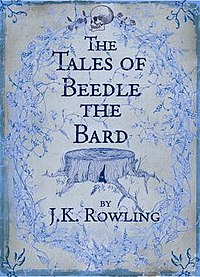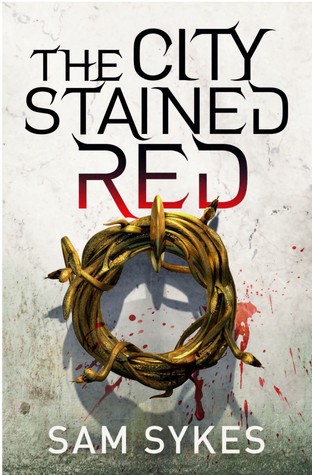The Lady in Red (Tales of the Bard Book 1)
To see what your friends thought of this book, please sign up.
Lists with This Book. This book is not yet featured on Listopia.

Tj rated it liked it Feb 07, Flashpool rated it it was amazing Aug 07, Lucy rated it really liked it Apr 15, Mark rated it really liked it Aug 27, Madeline Friedman rated it liked it Aug 21, Kay rated it it was amazing Jul 08, Jacqueline Menezes rated it it was amazing Jan 25, Saaliha rated it it was amazing May 02, Syazwana Azmi rated it it was amazing Jul 14, Nicholas rated it really liked it May 16, Dari rated it liked it Jun 09, Apoorv rated it really liked it Jan 27, Charmaine Sims-Smit marked it as to-read Jan 08, Ann Kostynska added it Jan 10, Shellee Lederhose added it Jan 12, Viviana B added it Jan 22, Mairwen marked it as to-read Jan 24, ErrBookErrDay marked it as to-read Jan 27, Pattyko Narukna marked it as to-read Jan 30, Valerie added it Jan 31, Archana Porselvan marked it as to-read Jan 31, Rohan added it Feb 03, Alani marked it as to-read Feb 18, Akata marked it as to-read Feb 20, Adriana Maia marked it as to-read Feb 27, Henry marked it as to-read Feb 28, K marked it as to-read Mar 07, Ivory Pellerin marked it as to-read Mar 16, Jolaade Adesanya marked it as to-read Mar 17, Subin marked it as to-read Mar 17, Aimee marked it as to-read Mar 18, Holly Pendred marked it as to-read Mar 29, Mariam Sherif marked it as to-read Apr 11, Shantanu Deo marked it as to-read Apr 22, Sara added it May 06, Tobyann Aparisi marked it as to-read May 14, Rebecca Meier added it May 31, With no more Harry Potter stories to look forward to, the tales will give fans a welcome, short-term fix of a world they thought they'd lost.
They are written, the author assures us, by a 15th-century wizard, and translated from the original runes by Hermione Grainger, with sage commentary by Albus Dumbledore, the late lamented head of Hogwarts.
For young witches and wizards, we are told, the stories of "the Hopping Pot and the Fountain of Fair Fortune are as familiar as Cinderella and Sleeping Beauty are to Muggle non-magical children". As JK Rowling observes in the introduction, "Beedle's stories resemble our fairy tales in many respects; for instance, virtue is usually rewarded and wickedness punished".
The heroines are, however, more feminist-friendly than the norm: But it would only be truthful to say that these takes on the traditional fairy story go to show just how good the originals are. The "Tale of Three Brothers" draws on an equally familiar rule of those stories, that in any group of three brothers, it will invariably be the youngest and humblest who does best in the end.
Get A Copy
The roots of fairy stories run very deep, and The Tales of Beedle the Bard are just the latest little fruits on a very old tree. In fact, the notion that magical children need their fairy stories is a reminder of the importance of the genre to all of us.
Right now, in fact, we don't need much reminding. Every Christmas pantomime draws on that shared tradition, even if it is only to turn it into farce of the highest camp. The fuss about the production of Cinderella at the Lyric Theatre, Hammersmith, on account of the bad language and the stepmother beating up the heroine, just goes to show that we care about our fairy stories. And that holds true even though there is only the most tenuous connection in most cases between what happens on stage and the plot.
- The Tales of Beedle the Bard - Wikipedia?
- !
- Spiritual Protection: A Safety Manual for Energy Workers, Healers, and Psychics!
- .
- Adobe Flash CS4 Professional on Demand!
- Fictional Feminism: How American Bestsellers Affect the Movement for Womens Equality (Literary Criti.
Nearly all the Christmas pantos are traditional stories: And that's how we like it. We have a yearning at this time of year, not for novelties, but for certainties, for the familiar rather than for the strange and challenging.
JK Rowling's The Tales of Beedle the Bard shows why we all need fairy tales
Perhaps it's the element of vulgar burlesque that we like in panto. Or maybe downbeat economic realities make the certainties of the fairy stories - in which money and strength are never as important as goodness and courage - that bit more attractive. But for modern versions of the old stories to be intelligible, and for the farce of pantomime to mean anything at all, we must first of all know our fairy stories.
And we nearly all do: Most of the most familiar of them were transmitted from Germanic folklore by the Brothers Grimm, others, like "Perrault", from the French court, more again from English folk traditions. One, "Aladdin", from the Thousand and One Nights of Arabian origin, is one for the multiculturalists. And that tradition of the fairy story is an extraordinary mix of Christian and pagan, Germanic, Celtic and Graeco-Roman folk tales and court stories.
In fact, many of the stories were never intended primarily for children.

They were tales for every fireside, or for a highly sophisticated French court, and only became the preserve of children when adult tastes changed. JRR Tolkien, who was steeped in the fairy-tale tradition - the background to The Hobbit is the story of Beowulf and his dragon - had little time for the notion that fairy stories were for children.
If they did end up as children's stories, he wrote in his book Tree and Leaf, it was by virtue of the same process whereby bits of old furniture, no longer wanted in the drawing room, would gradually find themselves in the nursery.
- See a Problem?!
- Navigation menu.
- Eyewitness.
- The website encountered an error while retrieving your page..
- Trampling Snowdrops (The Undercliff Novels (4)).
- Travelling Light.
Some of the origins of the most familiar stories are very dark indeed and anything but childish. In the earliest versions of "Snow White", it is her mother, not her father's new wife, who is envious of her beauty and tries to kill her.